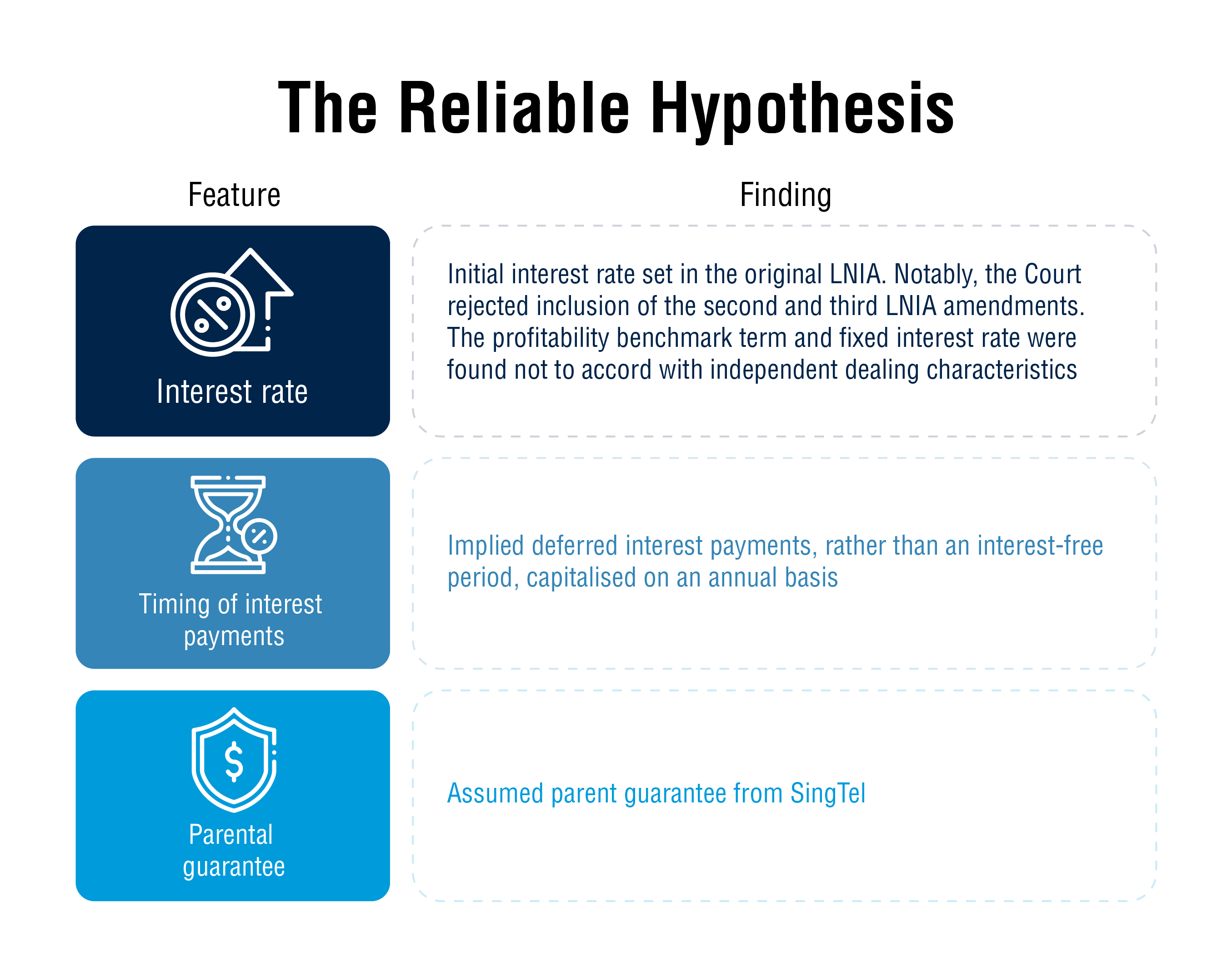
Publish Date
Apr 11, 2024
Expertise
Singapore Telecom Australia Investments Pty Ltd v Commissioner of Taxation [2024] FCAFC 29, concerned the ATO’s review of interest deductions claimed by STAI, a subsidiary of Singapore Telecommunications Limited (Singtel), for income years ending 2011 to 2013. STAI had acquired the shares in SingTel Optus Pty Ltd in 2002 through related party vendor financing amounting to $5.2 billion from another Singtel subsidiary, Singtel Australia Investments Limited (SAI), documented via a complex 10-year Loan Note Issuance Agreement (LNIA).
Under the LNIA, STAI was able to defer payment of accrued interest until the Optus business became profitable and a “variation notice” was issued by the lender, SAI. However, the liability to pay the interest still accrued. The interest rate payable under the LNIA was initially set to be adjusted each year by reference to the one year bank bill swap rate from time to time plus one percent. Over time, the LNIA was amended on three occasions in ways that affected the timing and calculation of interest. Relevantly:
In a judgment confirming the ATO’s approach, the Full Federal Court found STAI had failed to discharge its onus to prove that the assessments were excessive. Led by Justice Wigney, the Court considered issues around:
The Court rejected arguments of the taxpayer suggesting that the timing effects of the LNIA should be disregarded. In this regard, STAI sought to demonstrate that the total interest in fact paid by STAI over the entire 10-year term was less than the interest that might have been expected to be paid if an arm’s length rate had been agreed upon at the start of the arrangement, and that the assessment of whether there was a non-arm’s length dealing could be made at the end of the arrangement with the benefit of hindsight.
In this regard, the Court considered that the statutory context required the Court to consider whether a transfer pricing benefit arose in a particular income year, rather than over the life of an arrangement.
To apply the relevant tax provisions, the Court had to determine an appropriate basis for comparison to the actual arrangements.
Subdivision 815-A and Division 13 require identifying a hypothetical scenario reflecting independent commercial dealing in similar circumstances. This is called the “reliable hypothesis.”
The Court examined factors like the nature of the transaction, characteristics of the parties and evidence from experts.
 |
The Court did not find any errors with the primary judge’s characterisation of the reliable hypothesis. In this regard, the Court agreed with the primary judge that the taxpayer’s expert evidence regarding interest rates based on a U.S. bond issue in the debt capital market should be rejected, as this departed too far from the actual transaction and the characteristics of the parties. The taxpayer also failed to produce any probative evidence that suggested that parties dealing at arm’s length would have entered into the LNIA amendments, or enter into a vendor financing arrangement, without a parent guarantee. The Court also found that there was no evidence to suggest that an arm’s length fee would be payable for such a parent guarantee provided in a vendor financing situation.
This case provides further guidance (following Chevron Australia Holdings Pty Ltd v Commissioner of Taxation [2017] FCAFC 62 and Commissioner of Taxation v Glencore Investment Pty Ltd [2020] FCAFC 187) on reconstructing a suitable hypothetical for the transfer pricing of related party transactions and the extent to which the actual terms of the transaction and characteristics of the parties are relevant in this exercise.
Of particular relevance in this case was the fact that the commercial substance of the funding was a vendor financing arrangement, which then impacted the relevance of the taxpayer’s expert evidence, which largely relied on comparables in the debt capital market.
The case highlights that taxpayers carry the legal burden of proof and must prepare evidence based on the appropriate hypothetical transaction, rather than rely on theoretical arguments. Further, care should be taken when relying on expert evidence to formulate the reliable hypothesis as this is a legal concept.
Overall, the decision confirms tax authorities’ ability to challenge related party arrangements and the high threshold for taxpayers to prove that their international related party dealings do not diverge from independent market conditions between third parties.
Please contact an A&M tax team member to discuss your particular circumstances further.
https://www.alvarezandmarsal.com/insights/transfer-pricing-adjustments-upheld-optus-parent-company